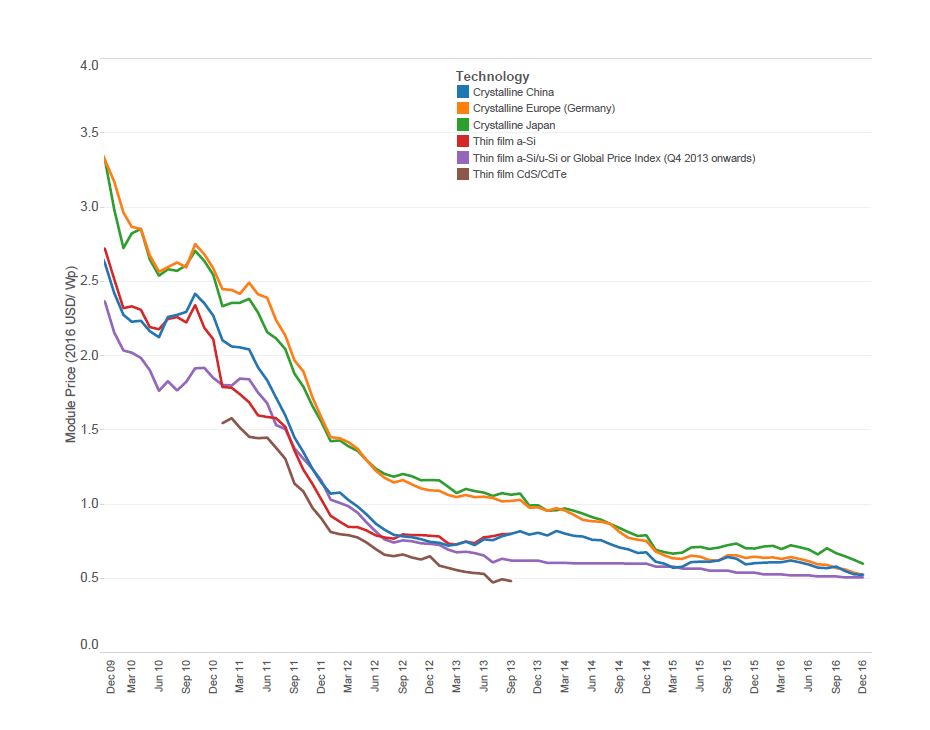VERIFY – YOU’VE GOT QUESTIONS, WE’LL FIND ANSWERS
A 9NEWS project to make sure what you’ve heard is true, accurate, verified. Want us to verify something for you? Email verify@9news.com
THE QUESTION
A viewer named Jay emailed us about a conversation he had with his state representative about whether renewable energy sources like wind and solar are cheaper than fossil fuels.
Jay sent us a string of emails between himself and Rep. Mike Foote (D-Lafayette).
In them, Foote claims that Xcel Energy agrees with his position that “wind and solar are cheaper with wind being a little cheaper than solar.”
Foote also said that Xcel "just comes out and says wind and solar are cheaper."
Jay said, “His response blew me away.”
And he wanted to know whether it’s true.
WHAT WE FOUND
We took Jay's question to Alice Jackson, the vice president for strategic initiatives at Xcel. And we talked to Michael Taylor, a senior analyst at the International Renewable Energy Agency.
We also read a 2016 report from the World Economic Forum.
We started by asking Jackson flat out if what Foote said was true.
“Well, I would completely agree with you on the wind side,” Jackson said. “As far as solar goes, it’s really borderline right now. It depends on the resource and where its located.”
We’re at a tipping point in Colorado.
In 2015, wind became the cheapest source of energy in Colorado at 4.5 cents per Kilowatt hour, according to data provided by Xcel.
Coal and hydroelectric came in close behind, followed by natural gas and then solar.
That’s a snapshot of what Colorado already has, but large solar farms like the one built recently in Pueblo can make power for about 4 cents per Kilowatt hour. And the new wind farm Xcel’s building near Limon, Colorado will only cost 2.8 cents.
“We’ve had days where two thirds of the energy that’s been consumed inside of an hour has been from the wind that we have on our system,” Jackson said.
But there's a caveat.
Xcel gets federal subsidies that make renewable energy cheaper and those are ramping down.
“Wind really is in the hunt without the production tax credit that’s out there,” Jackson said. And solar continues to drop in price year after year.
Jackson suspects that wind and solar will reach parity with fossil fuels by the time the subsidies disappear.
Part of that is because wind turbines and solar panels are getting better and cheaper, and part of it is because the batteries that store energy for days when the sun doesn’t shine or the wind doesn’t blow are also getting better and cheaper.
“What Colorado is experiencing is what is happening around the world … ,” Taylor said. “It is now quite an outdated opinion to consider renewables the more expensive option.”
And one of the cheapest places for solar energy on the planet might surprise you.
It’s the Middle East.
“Over the last 18 months there’s been a realization that this represents a huge economic opportunity for them,” Taylor said.
Countries like Jordan, which import oil, benefit from being able to produce power cheaper. And countries like Saudi Arabia, which export oil, can save their oil to sell if they power their people with solar.
“The [United Arab Emirates] has a couple of world records in terms of the lowest cost PPA … ,” Taylor said. “The world is a very different place to what it was just four or five years ago.”

Does this mean fossil fuels will become a thing of the past?
Not exactly.
Xcel plans to continue to invest in natural gas, but in a different way than it’s done in the past.
Battery technology isn’t at a place where it can ensure that your lights stay on when the sun stops shining on a solar farm.
So, Xcel uses what’s called a compression turbine as a backup. It’s a plant that can fire up at a moment’s notice and make power from natural gas and then shut down easily when the sun or wind returns.
The only fossil fuel Xcel is done with in Colorado is coal.
“We don’t even look at coal anymore,” Jackson said.
Part of the reason is the state and federal regulations on building a coal plant. But Xcel wouldn’t build a coal plant even if all those rules went away.
“Because it's not something that is of interest to our customers,” Jackson said. “That's also a really long-lived asset that your putting on your system.”
Coal plants can last 50 years, and no one knows what the price of coal will be in a decade.
The cost of fossil fuels is uncertain, but the wind and the sun show up for free.
BOTTOM LINE
It’s a little more complicated than what Foote told Jay in his email, but Xcel said Foote’s overall point is correct.
Colorado is at a tipping point where wind is cheaper even without the government subsidies. And solar isn’t far behind.



